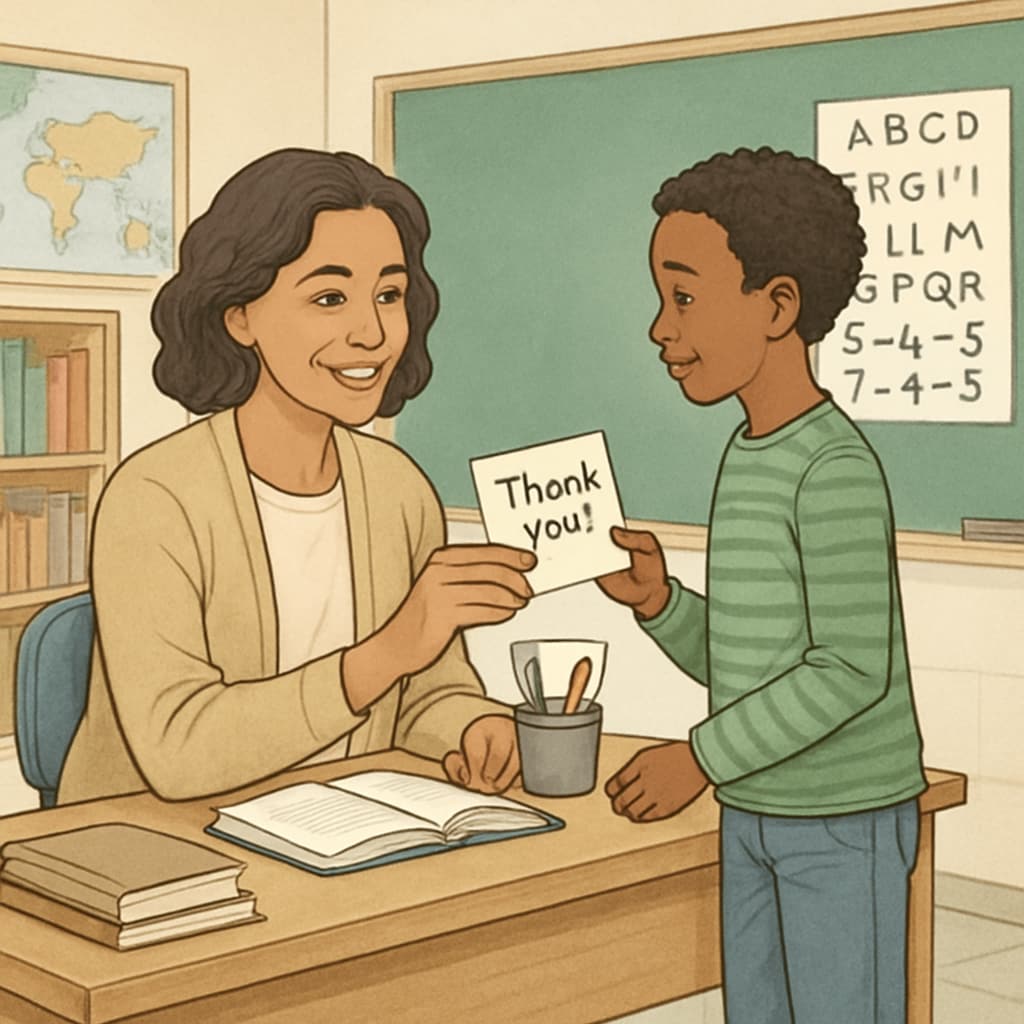In education, a simple act of student gratitude can carry profound meaning. When students express sincere thanks to their educators, it goes beyond mere politeness—it reflects the teacher’s lasting impact and reinforces the importance of respecting individual perspectives in the learning process. This dynamic interplay between student gratitude, teacher influence, and the value of listening has the potential to reshape education into a more meaningful and transformative experience.

The Transformative Power of Gratitude
Gratitude is more than a polite gesture—it is a powerful emotional expression that strengthens human connections. In the educational sphere, a simple “thank you” from a student can validate the teacher’s hard work, inspire greater commitment, and deepen mutual respect. For example, research highlights that gratitude fosters empathy and improves interpersonal relationships (Empathy on Britannica). As a result, when educators feel appreciated, they are often more motivated to tailor their teaching methods to meet the diverse needs of their students.
Students who express gratitude also benefit significantly. When they take the time to acknowledge their teachers’ efforts, they develop a greater sense of self-worth and emotional intelligence. This practice of gratitude encourages positive behaviors and helps them cultivate long-term interpersonal skills that are vital both inside and outside the classroom.
Respecting Student Perspectives
Respecting student perspectives is an essential pillar of effective education. Teachers who actively listen and value the voices of their students create a collaborative learning environment where students feel empowered. This empowerment fosters intrinsic motivation, encouraging learners to take ownership of their educational journey.
For example, when a teacher incorporates student feedback into lesson planning, it not only demonstrates respect but also shows adaptability. According to Active Listening on Wikipedia, listening attentively enhances trust and strengthens relationships. When students see their ideas and opinions being considered, they are more likely to engage deeply with the subject matter and participate actively in classroom discussions.

Gratitude as the Heartbeat of Education
At the core of education lies the human connection between teacher and student. When gratitude flows from students, it serves as a reminder of the ultimate purpose of education: to inspire, guide, and empower. This reciprocal relationship not only enhances academic outcomes but also nurtures emotional well-being.
For educators, moments of genuine appreciation are often the most memorable. They remind teachers of the significance of their role and reinforce their passion for teaching. Similarly, students who express gratitude find themselves more engaged and motivated, as their appreciation fosters a sense of belonging and mutual respect.
Ultimately, the act of saying “thank you” embodies much more than words—it reflects shared values, mutual respect, and the transformative power of education as a lifelong journey.
Readability guidance: Use concise paragraphs to maintain clarity. Incorporate lists and transitional phrases to summarize key points effectively. Ensure that ideas flow seamlessly, emphasizing actionable insights.


